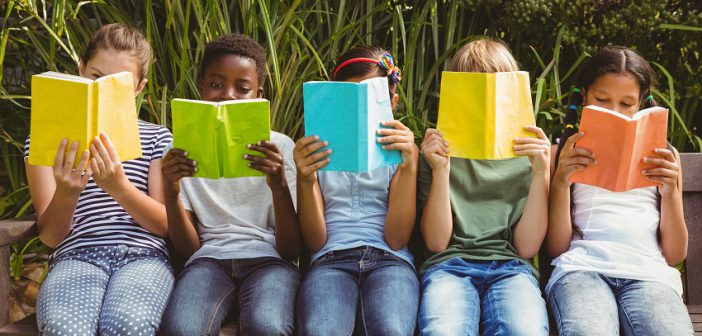The conversation surrounding racial justice remains fraught in the outside world. In classrooms, however, it is consistently shown to be a way to foster empathy, establish inclusivity, and help students learn about themselves, or issues they might not have previously known to exist.
Educators can empower their students by infusing the classroom with racial justice-related resources. In this article, we talk about racial justice, not as a political act, but as a foundational aspect of providing students with a well-rounded and effective education.
The Importance of Racial Justice in Education
Racial justice is a vital aspect of providing a robust and accurate learning experience that reflects the backgrounds of the widest number of students possible. However, diversification in educational materials isn’t only about catering to minority or otherwise marginalized groups within the classroom.
It’s about fostering a common understanding amongst groups that might never have interacted before.
Consider the MadeUpSchool in MadeUpRuralAmerica. It’s a school of 200, almost all of them white. The kids there are kindhearted and eager to learn, but their life experience is mostly limited to the miles and miles of surrounding fields, and it’s populated by faces that look quite a lot like theirs.
Without educational intervention, the kids at this school may not experience diversity at all until they get to college.
But wait, who’s that? Teacher Rachel. Rachel is an eighth-grade teacher. From MadeUpRuralAmerica, and all too aware of how limited the experience of these kids is. She decides to broaden their horizons by providing them with a wide range of different reading materials. She also makes a point of teaching them history lessons that reflect a wider range of human experiences than many traditional school books are willing to provide.
The result? Even though her students are primarily surrounded by people who are “like them” and—
Well, wait just one second.
Oh, apologies. Didn’t see you there. Yes?
“Like them.” What, just because they are white and rural? Isn’t the assumption that they are all the same a different form of racism?
Hypothetical person, you make a good point. Group thinking is a problematic aspect of human behavior, one that is at least one of the causes of racial conflict. The people in Ms. Rachel’s class are of course individuals. However, they do share a common background— one that may influence both how they behave, and how they are perceived by the outside world.
Rural kids are subject to undue assumptions the same way that black or Hispanic kids are. The children in Ms. Rachel’s class are learning to suspend those assumptions.
That’s the power of racial justice-infused learning materials. It’s not about lumping people together. It’s about highlighting common experiences and telling the stories of individuals within said experiences who fought back against things that weren’t fair.
How to Introduce Racial Justice in the Classroom
Most schools will talk a little bit about racial justice— most likely in February during Black History Month. And while it is great to spotlight the heroes of the Civil Rights Movement, it is a mistake to assume that this is an adequate beginning and end to racial justice’s role in the classroom.
There are many ways that educators can consistently sprinkle aspects of social and racial justice into their curriculum all year long.
Below, we highlight some of those ways.
Select Diverse Books
The literary canon is full of treasures that shouldn’t be ignored or shelved forever. However, there is no escaping the fact that the vast majority of those treasures were penned by white men— many of whom held perspectives that don’t look so good in a modern light.
Many teachers like Ms. Rachel are taking a step or two away from canonical literature, instead choosing to spotlight diverse books.
Dickens will always have his day, but when it comes to classroom learning, maybe it’s better to hear from victims of antisemites, instead of the antisemites themselves.
As an added bonus, diverse books tend to be a hit with the kids as well, many of whom are being given their first-ever opportunity to see protagonists who share a background with them.
Rethink History Lessons
You know the phrase, “History is written by the winners?” Well, it holds true much of the time. Children’s history textbooks often present a one-sided and heavily culled version of what actually took place. Teachers who want to infuse racial justice into their curriculums often do so by emphasizing different aspects of the same stories that have been told in classrooms for generations.
What was the first Thanksgiving like for natives? Yes, the North was in favor of ending slavery, but what was it like to be a black Yankee?
The answers to these and other questions provide students with a much more robust understanding of history.
Inclusion Doesn’t Have to Be a Special Lesson
It’s also worth keeping in mind that diversity, inclusion, and racial justice don’t have to be specialized lessons. Many teachers make a point of spotlighting minority achievements in a more casual and ongoing way.
The lesson doesn’t have to be, “And today we are talking about black scientists.” Instead, it can be, today we are talking about BLANK. This is how George Washington Carver contributed.”
And so on.
Conclusion
Diversity, inclusion, and justice in the classroom are not about furthering a political agenda. They are about providing an accurate depiction of history to impressionable students. They are about making sure that everyone in the classroom feels safe and seen. They are about fostering understanding.
While the task of rethinking a curriculum can be daunting, teachers should note that a little bit of effort goes a long way. It doesn’t take so long to spotlight diverse achievements. The efforts are always worth it, both for the groups being spotlighted, and the people who are hearing about racial justice for the first time.





I am quite impressed with the Tip you shared. Very useful tips and worth learning!